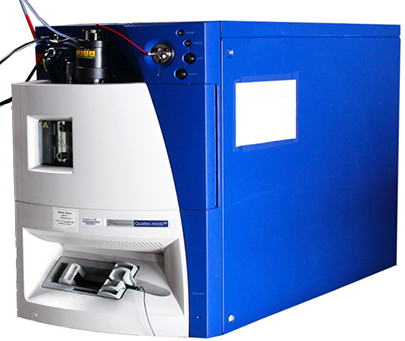بیش از صدها بیماری متابولیک ارثی تاکنون شناسایی شده که بسیاری از موارد آن پیچیده بوده و نیاز به روشهای تشخیصی پیچیده دارد یکی از این روشها تکنیک MS/MS اسپکترومتری (TMS) هست که در اکثر مراکز معتبر دنیا موجود بوده و بهمنظور غربالگری و شناسایی بیماریهای متابولیک مورداستفاده قرار میگیرد. بیماریهای متابولیک مادرزادی قابلشناسایی با این روش بیش از ۳۰ بیماری هست که به سه گروه عمده تقسیمبندی میشوند:
- الف) اختلالات آمینواسیدها
- ب) اختلالات اسیدهای چرب
- ج) اختلالات متابولیسم ارگانیک اسیدها
غربالگری جامع بیماری های متابولیک نوزادان با روش TMS
به کمک این تکنولوژی پیشرفته میتوان تمام موارد ناشی از این سه دسته بیماریها را در زمان کوتاه شناسایی کرد لیکن برای برنامههای غربالگری تعداد محدودی از بیماریها انتخاب میشوند. ملاک این انتخاب قابلدرمان بودن آن بیماری، امکان پیشگیری از عوارض جبرانناپذیر و وجود روش تأییدی برای تشخیص قطعی بیماری است؛ لذا هرگز نمیتوان تمام بیماریهای متابولیکی را در برنامه غربالگری گنجاند چرا که در بسیاری از موارد درمان مؤثری برای آنها وجود ندارد.
موارد درمانپذیر نیز اغلب به رژیمهای غذایی مخصوص و مصرف شیرهای رژیمی و گاهی داروهای ویژه نیازمندند و با این تمهیدات نیز درمان قطعی ممکن نبوده و تنها میتوان از بروز عوارض بیماری جلوگیری نمود؛ لذا شناسایی موارد غیر قابلدرمان ازاینجهت حائز اهمیت است که میتوان از ابتلا فرزند بعدی در حاملگیهای آتی به کمک روشهای تشخیصی ژنتیکی با انجام تست پیش از تولد (PND) بر روی نمونه CVS و یا آمنیوسنتز جلوگیری نمود.
الف) اختلالات متابولیکی آمینواسیدها
آمینو اسیدها واحدهای کوچک سازنده پروتئینهای بدن هستند و حدود ۲۰ نوع آمینواسید در بدن موجود است که آنزیمهای متعددی برای ساخت یا تجزیه آنها در بدن فعالیت مینماید. کمبود تعدادی از این آنزیمها موجب کاهش برخی از آمینو اسیدها و تجمع برخی دیگر شده و اثرات سمی برای بدن بهویژه برای مغز ایجاد مینماید. علایم این گروه از بیماریها بسته به نوع نقص آنزیمی و نوع مادهای که تجمع مییابد متفاوت است.
حتی در افرادی با یک نقص آنزیمی نیز علایم یکسان نبوده و بسته بهشدت نقص آنزیمی علایم متغیر هست. این بیماران در بدو تولد کاملاً طبیعی بوده و هیچ علامتی ندارند و در طول زمان به دنبال مصرف شیر و تجمع مواد سمی و یا به دنبال یک استرس (که در نوزاد معمولاً گرسنگی طولانی و یا عفونت است) کمکم علایم ظاهر میشود. علایم کلی بهصورت افت قند خون، بیحالی، عدم شیر خوردن، بیقراری، تشنج، عدم وزنگیری، تأخیر تکاملی، عدم رشد سر، اختلالات حرکتی، سفتی یا شلی بیش از حد عضلات، درگیری کبدی و اغما هست.
در صورت بروز علایم معمولاً درمان مشکل بوده و در صورت درمان موفق نیز اغلب عوارض ناشی از بیماری باقی میماند؛ لذا ضروری است این بیماریها پیش از علامتدار شدن شناسایی و بهموقع درمان شوند. با درمان بهموقع میتوان از عوارض ذکر شده تا حد زیادی جلوگیری نمود و یک زندگی سالم برای کودک فراهم کرد. اغلب این بیماریها بهصورت اتوزوم مغلوب به ارث میرسند. بیشتر بدانیم…
ب) اختلالات متابولیکی اسیدهای چرب
حدود ۱/۳ انرژی موردنیاز بدن از چربی تأمین میگردد که عمدتاً به صوت تری گلیسیرید در منابع غذایی مانند روغنهای گیاهی - لبنیات - گوشت - ماهی و… موجود هست. به دنبال هضم چربی در روده باریک اسیدهای چرب آزاد شده و با جریان خون و سیستم لنف وارد کبد شده و در آنجا متابولیزه میشود. تجزیه چربی در سلول و درون میتوکندری بایستی انجام شود و برای ورود به میتوکندری برای اسیدهای چربی که زنجیره بلندی دارند نیاز به یک ناقل به نام کارنیتین هست که کمبود آن میتواند در فرایند متابولیسم چربیها اختلال ایجاد نماید. اختلالات متابولیسم اسیدهای چرب، گروهی از بیماریهای متابولیک محسوب میشوند که طی آن آنزیمهای مرتبط با اکسیداسیون اسیدهای چرب در میتوکندری دچار اختلالات فعالیت هستند و تولید انرژی در بدن مختل میشود.
از طرف دیگر تولید کتون هم که خود منبع انرژی است و در مراحل انتهایی متابولیسم اسیدهای چرب تولید میشود مختل شده و زمینهساز افت قند بیشتر در این بیماران هست. علایم کلی این بیماریها مشتمل بر افت قند، استفراغ مکرر، نارسایی کبدی، ضعف عضلانی، مشکلات قلبی، تشنج و اغما هست که مجموعه علایم این کریز متابولیک را به نام سندروم شبه ری مینامند. بر خلاف اغلب بیماریهای متابولیک دیگر که افت قند با افزایش تولید کتون همراه هست، در این بیماران کتون ادرار منفی یا ناچیز است که به تشخیص بیماری کمک مینماید. بیشتر بدانیم…
ج) اختلالات متابولیکی اسیدهای ارگانیک
ارگانیک اسیدها دستهای از اسیدهای آلی در بدن هستند که در نتیجه اختلال در متابولیسم اسیدهای آمینه یا اسیدهای چرب تولید شده و در مایعات بدن تجمع مییابند و اثرات سمی برای بدن و بهویژه مغز دارند. نقایص آنزیمی متعددی در این مسیر موجب بروز ارگانیک اسید میگردد که علایم آنها بسته به نوع اسید ارگانیکی که تجمع مییابد متفاوت است و حتی در یک نوع اختلال ارگانیک اسید علایم از فردبهفرد بسته به میزان شدت نقص آنزیمی متفاوت هست. شیوع بیماریها بهتنهایی کم است؛ اما در مجموع ۱/۲۰۰۰۰ تولد زنده را شامل میشود.
اغلب نوزادان در چند روز تا چند هفته بعد از تولد هیچ علامتی ندارند و به دنبال مصرف شیر و پروتئین و تجمع اسیدهای آلی کمکم علایم ظاهر میشود. علایم کلی این بیماریها بهواسطه تجمع اسید و آمونیاک و افت قند در بدن بوده که مجموعاً به نام کریز متابولیک معروف است که شامل خوابآلودگی - بیحالی - بیاشتهایی - عدم وزنگیری - استفراغ مکرر - تنفس تند - نارسایی کبد - کمخونی - افت کلسیم خون - سفتی یا شلی غیرطبیعی عضلات - رشد دور سر غیرطبیعی - تشنج و اغما هست که در صورت عدم درمان بهموقع به مرگ کودک منتهی میشود. تشخیص بیماری با تست غربالگری از قطره خون پاشنه پا در چند روز اول تولد و پس از شروع تغذیه امکانپذیر هست که با افزایش متابولیتهای مرتبط با اسید آلی میتوان نوع بیماری را شناسایی نمود. نمونه ادرار برای بررسی نوع اسید آلی و بهعنوان تست تکمیلی نیاز هست.
همچنین بر خلاف اختلالات اسیدهای چرب در این نوع اختلالات، میزان کتونها در ادرار بسیار بالا هست که در افتراق این دو گروه بیماری میتواند کمککننده باشد. برای تأیید تشخیص از تستهای ژنتیک میتوان استفاده کرد. بررسی ژنتیک به تشخیص پیش از تولد (PND) بر روی نمونه CVS و یا از طریق آمنیوسنتز جهت پیشگیری از تولد فرزند مبتلا بعدی نیز کمک مینماید. برای این منظور بایستی حتماً جهش بیماریزا در نوزاد مبتلا و والدین ناقل پیش از بارداری مشخص شده باشد تا در بارداری بعدی بتوان تست PND را انجام داد.
درمان کلیه اختلالات با محدودیت مصرف پروتئین (و گاهی چربی)- مصرف بیشتر مواد قندی و پرهیز از ناشتایی طولانیمدت - استفاده از شیرهای رژیمی در برخی موارد خاص - مصرف داروها برای درمان اسید خون و افزایش آمونیاک (مانند بیکربنات - سدیم بنزووات و فنیل بوتیرات) و گاهی برای دفع اسید و یا آمونیاک نیاز به دیالیز هست. نهایتاً در برخی موارد که بهخوبی به درمان پاسخ نمیدهند ممکن است پیوند کبد کمککننده باشد. از انواع شایع این اختلالات میتوان به متیل مالونیک اسیدمی - پروپیونیک اسیدمی - ایزووالریک اسیدمی و گلوتاریک اسیدمی تیپ ۱ اشاره نمود. گهگاه گلو تاریک اسیدمی تیپ ۲ را نیز جزو این دسته طبقهبندی مینمایند که در مبحث اختلالات اکسیداسیون اسیدهای چرب به آن اشاره شده است. توارث اغلب انواع این اختلالات به فرم اتوزوم مغلوب است. بیشتر بدانیم...



زهرا اروان
1403/دی/12 18:44:12